The scene at Stages. Photo by Terry Robson, courtesy of Arnie Kliger.
Article originally published December 4, 2012 by The Grid online (thegridto.com).
With the help of two rare DJ mixes, we revisit the early-‘80s Yonge Street club that provided Toronto’s gay community with a safe haven and showcased cutting-edge dance-music sounds, before the spectre of AIDS brought the party to a close.
BY: DENISE BENSON
Club: Stages, 530 Yonge
Years in operation: 1977-1984
History: The northwest corner of Yonge and Breadalbane was once occupied by the Hotel Breadalbane. In 1945, the Bolter family purchased the hotel and would transform the downstairs of 530 Yonge into The Parkside Tavern. The Bolters also owned The St. Charles Tavern, at 488 Yonge. By the mid-1960s, both taverns were known to be gay bars.
At that point in history, gay nightlife in Toronto was still very much underground. It was common for the heterosexual owners of gay bars to be contemptuous of their clientele. This seems to have been the situation at The Parkside, a dingy beer hall largely frequented by a daytime crowd. The Parkside’s owners allowed police to regularly spy on patrons in the washrooms, waiting to nab men engaged in any sort of sexual acts. Arrests were made, and the practice continued throughout the 1970s, even as gay activists organized leafleting campaigns and called for boycotts of the bar.
These conflicts were characteristic of the time. During the mid-to-late-1970s, Yonge Street was the main artery of Toronto gay social life (it would shift to Church in the mid-1980s). Those looking to dance could hit a number of spots near Yonge and Wellesley, like The Manatee, The Quest, Katrina’s, Club David’s, The Maygay (later Charly’s), and Cornelius, which sat above biker bar The Gasworks. By 1977, there were even two gay-owned bars in the area: The Barn, opened by Janko Naglic at 418 Church, and small cruise bar Dudes, opened by Roger Wilkes, a founder of the York University Homophile Association, and his partner David Payne in an alley just behind The Parkside.
While there were lots of options to dance and cruise, Yonge and its surrounding streets were not necessarily safe for queer people. Not only did the police frequently harass gay hangouts (most notoriously during the 1981 bathhouse raids), gay men and lesbians were all-too-often physically attacked.
“Those were the days when, on Halloween, people would throw eggs and ink at drag queens,” says Arnie Kliger, the man who would open Stages. “It also wasn’t particularly safe for gays to walk around the side streets.”
Kliger had both safety and glamour in mind when he worked with partner Stephen Cohen to open after-hours gay disco Stages. Its location, above The Parkside, had housed numerous clubs since the late-’60s, among them The August Club, Mama Cooper’s, The Milkbar, Quasimodo, and Bimbo’s.
Influenced largely by New York gay and after-hours clubs like The Saint, Studio 54, and 12 West, Kliger and Cohen chose to open an unlicensed dance club where music, dancing, and men would be the focus. There was nothing like it in Toronto at the time.
Stages’ doors opened at 12:01 a.m. on January 1, 1977. People lined up to begin the new year in this new disco that would raise the bar for late-night dancing in Toronto.
“Many of the straight-owned clubs were rundown, the owners didn’t care, and just wanted to make a buck,” recalls DJ/producer Barry Harris. “Charly’s upstairs at the St. Charles Tavern was a good example of that. The gay crowd accepted it for years as gay clubs were still somewhat taboo, but eventually stopped supporting them.
“Stages was opened by an owner who appreciated good sound, good quality everything, and took care of his customers.”
Why it was important: “We wanted to offer a different late-night experience, and take the whole party to a higher, better level,” says Kliger of his venture with Cohen (who would depart a few years after the Stages’ opening to pursue his main interests in design and architecture).
Kliger was committed to creating an experience as good as—or better than—those he had at the New York and San Francisco clubs he frequented. When patrons made it through the line that ran up the stairs to Stages, they turned left, paid a small cover (generally $5-$8) and walked in to a sizable but intimate rectangular room with a large wooden dancefloor in the middle. At the far end was a long bar that sold juice, water, and oodles of Perrier. The bar was adorned with bouquets of flowers and trays of fresh fruit, while bartenders would also pull out boxes of percussive instruments—tambourines, bongos, maracas—for customers to play. On the east and west walls, overlooking the dancefloor, were two built-in bleachers that ascended almost to the ceiling. They were deep and upholstered, with huge custom cushions adding to the comfort.
“Arnie Kliger was the best bar manager Toronto ever had,” DJ/producer Paul Grace tells me. “Arnie wanted a space where he would be comfortable and happy partying—one that was safe, where there were no problems. He set up the club so people could relax.”
Kliger created membership cards for Stages, and hired former policeman Bob Bush, nicknamed Gloves, to keep potential troublemakers out.
“Gloves was an ex-London bobby, and he was our sole security man,” Kliger says. “He could take care of 10 guys trying to come up that stairway. In the entire time Stages was open, there was never a problem inside—no fights, nothing. I think that speaks volumes.
“We wanted people to have a safe place when they came in with their friends, all twisted and bent,” Kliger adds. “They knew that once they got off of Yonge Street and through those doors, they were secure to do whatever they wanted—party, take their shirt off, play a drum, whatever. Nobody came there for an hour; they stayed till morning. Most of our clientele carried sunglasses.”
Stages ran Fridays, Saturdays, and Sundays, with doors generally opening at 11 p.m. and music heard until 6 a.m. or later. The 600-capacity club attracted large, loyal crowds, primarily of gay men, but also lesbians and straight folks attracted to the music and vibe.
“Stages was the only club I had ever heard of at the time that was mixed, gay and straight,” recalls Harris, an occasional customer who would later fill in as a guest DJ there. “I believe this was unusual, but was also something that made Stages very ‘chic.’”
“Fridays were definitely more straight, or mixed, but Stages was a place that was very ‘tolerant’ on any night, sort of setting up for a sensibility the Twilight Zone carried through,” recalls musician, producer and photographer Don Pyle, a Stages regular for years after his sister introduced him to the club in 1979.
“More than tolerant, Stages had a slightly decadent feel because it was night people and pretty sexual on the dancefloor, with all orientations having fun.”
Club people flocked to Stages for many reasons, with its stellar sound and lighting high on the list.
“The lights came from New York’s Times Square Lighting,” says Kliger. “I couldn’t afford [renowned sound designer] Richard Long, but I copied his music systems.”
“Stages was one of those magical clubs you just had to experience,” states Paul Grace. “It’s still my favourite club, and that includes [clubs in] New York. It was relatively small, but had a killer soundsystem and great lights. There were these lovely big scoop speakers for bass that you could actually crawl into. I knew guys who would, and then they’d trip on the bass all night.”
“On the dancefloor, it was like a nice, warm fuzzy blanket because you were cocooned in the lights and the music,” recalls Richard “Bambi” McNicoll, a Stages lighting tech from 1982.
“The speakers completely surrounded you. Stages was intimate and had sound that could have been in a club three times its size. The lighting was also far ahead of its time. Where most club lighting systems were pretty static and the fixtures stayed where they were, what made Stages so unique was that you could change the light show every week—and that’s what I did.”
McNicoll, who came to Stages after working lights at Charly’s, was shown the ropes by lighting woman Andrée Emond. A veteran of venues including Rock ‘n’ Roll Heaven, Emond worked at Stages from 1980 to 1983, brought in by one of her best friends, legendary Toronto DJ Greg Howlett. Emond and McNicoll would squeeze themselves into Stages’ tiny booth, working to create energy and mood directly beside DJs including Howlett, Wally MacDonald and, later, Paul Grace.
Emond recalls taping up her fingers to work the many toggle switches on Stages’ vertical lighting board, built into the wall. The DJ booth was directly on the edge of Stages’ dancefloor, with nothing but wire fencing separating crew from crowd. Five mirror balls were clustered in the dancefloor’s centre.
“The square dancefloor had a fairly low ceiling—pin spots, spinners and strobe lights were set above and on a suspended industrial grid that covered it,” says Emond. “But it was the Christmas lights and the Kelly controller that blew me away. There were at least 1,500 hundred lights that could be changed to provide rows of basic colours.
“The crowd would scream with excitement when those blasts of bright light came perfectly timed with the music. I learned not to be afraid of the dark, and to let music flow through my hands at Stages. Greg and Wally’s music, mixes, and effects provided all of my cues.”
Stages, as all the people I interviewed tell me, was largely defined by its music. The crowds were deep into new sounds, and they were educated by some of the greatest dance-music pioneers this city has ever produced.
“The two DJs who played Stages for years were Greg Howlett and Wally MacDonald, both very good, with very different styles,” says Grace, who danced at Stages during the years when he himself was DJing at venues including Cornelius, the CN Tower’s Sparkles discotheque, and Yorkville’s Bellair Café.
“Wally played lots of weird shit—he liked to wake the crowd up all the time—whereas Greg was the master of the continuous mix. He’d start at 11 o’clock, slowly build the tempo up, and by 4 a.m. he’d be around 140bpm, then start to bring it down. By 5 a.m., he was down below 120 bpm, getting sleazy. It was very trippy and wonderful.”
MacDonald—who DJed during Stages’ earliest years, as did his brother Larry on occasion—was also adored for his impeccable mixing, late-night sleaze sets and devotion to underground disco.
“Wally loved to twist songs around and inside out,” says Barry Harris. “He also used a reel-to-reel tape machine to fuck with people’s heads by using the delay playback, bringing the echo in and out. In 1979, DJ mixers were just mixers; there was no delay, reverb, echo or effects at the time. It was very difficult to even find a mixer to buy, so Wally was doing a lot of really innovative and creative DJing.”
MacDonald was also a pioneering remix artist. He reworked songs like Antonio Rodriguez’s “La Bamba” and Harlow’s “Take Off” into epic extended versions. MacDonald’s masterful remix of Amanda Lear’s “Follow Me” sounds fresh to this day.
“Wally influenced me greatly during my entire DJ and remix career,” says Harris, who started DJing in 1983 at Dudes (whose address, coincidentally, is now home to pro-audio shop Saved By Technology).
“I remember one Sunday, Wally played “At Midnight” by T- Connection,” Harris continues. ”He was playing a reel-to-reel tape version that he had re-edited himself. He extended the big percussion intro and played bits and pieces of ‘I Will Survive’ intro overtop. Now, something like that sounds like no big deal, but at the time, no DJ used to remix anything like this—they simply played the records.
“Another time he played “Heroes” by Big Ben Tribe, then somehow mixed into the original David Bowie version. Brilliant! By the end, the whole crowd started applauding. I had never seen an audience applaud a DJ.”
MacDonald would bounce between clubs as a resident DJ, also playing venues like Sugars, 18 East, The Albany, and Wonder Bar.
Greg Howlett would soon become Stages’ main music man. This former resident DJ at Le Tube was known to play joyful, uplifting dance music, with a lean towards dancefloor classics and disco edits, like “Souvenirs” by Voyage and Yvonne Elliman’s “Love Pains.”
“Greg was our house DJ for at least five years,” enthuses Kliger. “Greg was the star. He had such a following, and an amazing ability to read the crowd and do it right. I trusted him 9,000 per cent.”
“I loved listening to Greg, and I try to emulate him to this day,” offers Grace. “He would play for hours, and you’d never know when one record was going into another. He was so smooth, and really worked at that. He constantly had a new set of stuff he’d play each night.”
Andrée Emond shares a favourite example of Howlett’s confidence behind the decks.
“I will never forget one evening with Greg. The crowd was particularly bored, so he turned off the turntable and stared at them. They stood there, shocked. Once the drone came to a complete stop, he played their favourite song of the day. Everyone went crazy and the rest of the night was amazing.”
Both Howlett and MacDonald were trendsetters, but took different paths as dance music began to splinter.
“The big ‘disco crash’ occurred around 1979,” Harris explains. “Dance music was fragmenting, and everyone was very confused as to where club music was going. It was the beginning of a new decade, new attitude. New wave was now cool, and disco was not. So the ‘cool’ Stages people followed the trend; my perception is they followed Wally, who really embraced the new sound as a fearless risk-taker. Greg did not follow the new sound, and would not—no way. He was going to stick to what he felt was ‘gay music.’ Greg stuck to his guns, and took a lot of shit and attitude from a lot of people.”
“Wally MacDonald was the only gay club DJ in town playing new dance music that had come out of post-punk or early electronic scenes,” confirms Pyle, author of Toronto punk–history book Trouble in the Camera Club.
“Some songs I distinctly remember being very excited to hear in a gay club were ‘Nowhere Girl’ by B-Movie, ‘I Travel’ by Simple Minds and ‘Numbers’ by Kraftwerk. ‘Numbers’ was always a very late-night track, with the breakdown at the end being used to shift the mood.”
“Stages was an amazing dance club because of the DJs, and when it came to mixing, no one was better than Wally,” enthuses Lena K, former bartender at restaurants like Le Pigale, Cornelius above Gasworks, and a regular at Stages for most of its existence, especially on the eclectic Sunday nights. “I still feel the electricity run through me when I think about Wally’s mixes.”
As the disco-vs.-new-wave battles played out on Stages’ dancefloor during the early ’80s, MacDonald was let go from the club, and then notably rehired in January of 1983.
Stages had a devoted following. Like all the best nightclubs, it fostered both a feeling and a community.
“I knew what I wanted to see, and have people feel: happy, happy, happy,” says Kliger. “And they were. We had the tambourines, the fan dancers, the whole works going. I made the place and gave people somewhere to express themselves, but the crowd created it for themselves.
“I’m sure some of the drugs contributed to this”—poppers and MDA were the main substances of the day—”but there was a feeling of membership, camaraderie, friendship, love. We fed a feeling, and it worked.”
Pyle also fondly recalls the club’s festive vibe. “It was a very celebratory space. Everyone really got down. I recall men in skirts, cheerleader outfits, fan dancers. There was so much excitement and anticipation.”
Kliger tells the tale of an evening when uniforms were especially prominent: “There was a fetish party one night on Church Street, with everything: guys dressed up in police uniforms, there were bras and garter belts, transsexuals, you name it. We had very heavy theatre-type dry ice at Stages—we didn’t use the cheap smoke—and it creates a very heavy steam. We would pump that place so full of dry-ice smoke that you couldn’t see yourself, with gigantic fans that would suck the air out onto Yonge.
“This night was in January and, when I turned the fans on, some people on the street thought the building was on fire. Toronto Fire responded quickly, came running up the stairs, and I happened to be at the front door. I looked down the stairs and said to Bob, the bouncer, ‘Don’t charge them. They’ve got great outfits.’ I got pushed up against the wall with an axe by a fireman telling me to get out of the way, and then I realized my mistake. Greg, being as sharp as he was, put on the song ‘Fire in my Heart.’”
Lighting man McNicoll also recalls a strategic use of the dry ice machine.
“It wasn’t used all that much, because proper dry ice costs a lot. Back during the days of ‘It’s Raining Men,’ somebody decided to splurge. The dry ice came out over the dancefloor through dryer hoses and billowed down. As soon as it did, everybody opened umbrellas and started dancing around with them. Stages was one of those mad places where every weekend, something happened.”
Who else played/worked there: Paul Grace came onboard at Stages after a young Chris Sheppard had brought more new wave to Fridays and a stretch of Sundays.
“Fridays were fairly mixed, a bit trendy, and eventually became more alternative in music and everything else,” explains Kliger. “That’s where Chris came in, later. He ran the Friday switchover to alternative music and club kids in crazy outfits—’Rock Lobster’ and all that kind of stuff. I just didn’t understand it because I’m hardcore gay, but I learned.”
Kliger did understand the allure of late-night socializing, and was equally at home mingling with the owners of clubs including Le Tube and Twilight Zone, as well as TIFF (then still known as the Festival of Festivals) party planners. Stages, in fact, hosted some of the film fest’s earliest parties, with appearances from celebs like Tom Cruise, Peter O’Toole, Richard Chamberlain, and Kathleen Turner.
Tina Turner also paid the club a visit, as did longtime gay favourite Eartha Kitt.
“Eartha Kitt happened to be playing at the Royal York’s Imperial Room—it was at the time that ‘Where Is My Man?’ was big—and I did everything I could to get her up to Stages,” shares Kliger. “We sent flowers, notes, a bottle of scotch, and begged her to come up. We sent a limousine to the Royal York and, sure enough, she bit. Greg had the back-up tracks going and we had a microphone ready, even though she wasn’t engaged to perform. She loved it so much she grabbed the mic and did the song.”
Stages’ staff tended to be just as attractive as the celebs they served.
“The staff and family at Stages were incredible, along with being some of the beautiful men you ever saw,” says Emond, citing people like bartender/manager Andy Armstrong and cashier John Bannerman.
“It was a casting call,” agrees Kliger. “We wanted to have the best-looking people with their shirts off. The bartenders were more than bartenders; they were friendly, they were happy, and, in the middle of the night, if it got hot—and it would get really hot in there—we’d send them out on the dancefloor with trays of watermelon and cantaloupe, oranges, ice, popsicles and water. Clubs didn’t do that.”
Stages bartender Brent Storey, who would later be an integral staffer at gay bar Boots, was also one of Toronto’s most avid of fan dancers.
“There were a lot of fan dancers at Stages,” says Grace. “When it was busy, they would dance around the edges and, as the night got later, and people started to leave, these guys would start taking over the dancefloor, until finally, the whole floor was full of fan players.”
The fan dancers were a key part of Stages’ core family, and certainly helped to establish the club as decidedly gay at a time when more sexually ambiguous alternative clubs, like Voodoo and Nuts & Bolts, appeared on the scene.
“There was no shortage of places to dance, but nothing could touch Stages—Stages was like finding Mecca,” says Lena K, who now works in the legal field, specializing in intellectual property law. “Although I had gone to other dance clubs, there was no other place where I felt as safe and blissfully free to just be me. I made real friends there, most of whom have been lost to AIDS, but a handful remain and are still friends over 30 years later. That club brought us together every weekend, and that’s some kind of special thing.”
What happened to it: By 1982, there was talk of GRID, a.k.a. gay-related immune deficiency, later to be known as AIDS. Many in the gay community began to die in this time of great uncertainty.
“The AIDS crisis was just beginning, and people were really afraid,” shares McNicoll, who would later work the lights at clubs including Boots and Chaps. “We were losing a lot of artists and friends, and nobody really knew what was going on, so there was a lot of fear. I think that really had a detrimental effect on club life as a whole. There was a tremendous loss.”
Both Greg Howlett (who would go on to heat dancefloors at clubs including Komrads and Chaps) and Wally MacDonald passed away from HIV-related complications in the 1990s.
“I made and lost many friends at Stages,” says Emond, who later worked the lights at both The Copa and The Diamond, and is now a web developer and teacher. “I still miss the wonderful people I met, and was honoured to play with during that special time. The memories are bittersweet.”
But Stages also closed because Kliger felt it was time.
“It started running out of steam,” he offers. “I felt that what could be done there had already been done, and I was out of themes and ideas. I wanted to take the Stages family out on a high note, so I made the decision that it was best to put a period at the end of a sentence.”
Stages held a final New Year’s Eve party on December 31, 1983 and closed in early 1984. Within weeks, Kliger was hired by the Chrysalis group to transform the former Jarvis Tavern into gay club Bar 101. (Years later, the same space would become Tazmanian Ballroom, home of the infamous Rock & Roll Fag Bar.) Kliger later managed venues including The Copa, Bemelman’s, and the Bellair Café before moving into the hotel business.
Barry Harris would follow Kliger to DJ at both Bar 101 and The Copa, before becoming a resident at Charles Khabouth’s Stilife. He later had a huge production and remix career as half of both Kon Kan and Thunderpuss. More recently, Harris has returned to his rock roots and is working on an as-yet unnamed project.
Paul Grace also became an in-demand producer/remixer, particularly as a member of Boomtang Boys. He then turned his talents to scoring for film and television, was a music consultant for the TV show Queer As Folk, and maintains a home studio.
Before all of this, Grace partnered with Brent Storey and David Strand to re-open the Stages space as Avalon in 1984. About a year later, the upstairs of 530 Yonge briefly reopened as Changes. Both it and The Parkside Tavern below closed in March of 1986 to make way for a Burger King. The building is now a Sobeys Express. [Addendum: the Sobey’s has since closed, with the location listed for retail opportunities.]
Thank you to interviewees Andrée Emond, Arnie Kliger, Barry Harris, Don Pyle, Lena K, Paul Grace, and Richard McNicoll, and to Carlos Mondesir, Eric Robertson, and James Vandervoort. Special mention to Lorne Goldblum for the DJ mixes and to the late Rick Bébout for his Promiscuous Affections documentation of gay Toronto social life.

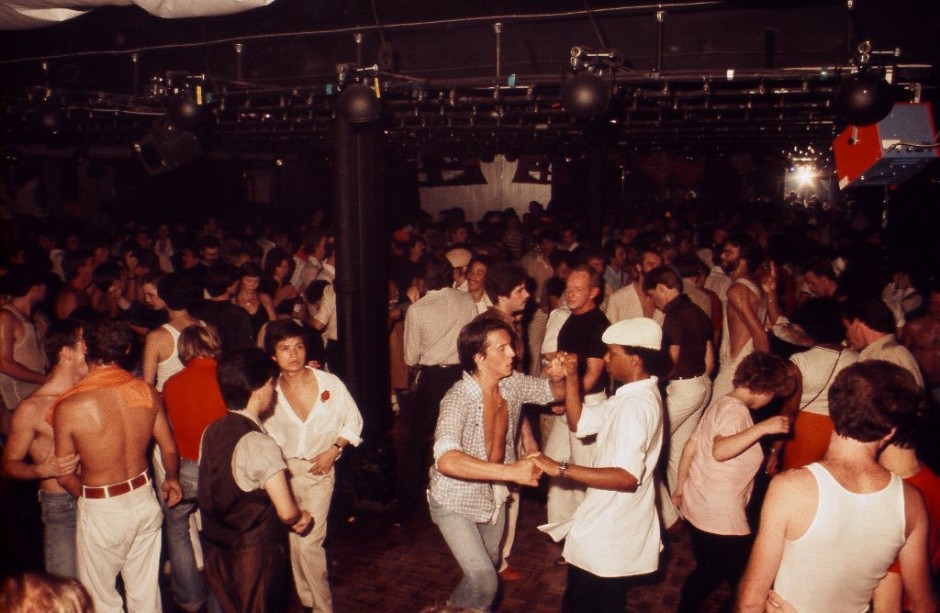
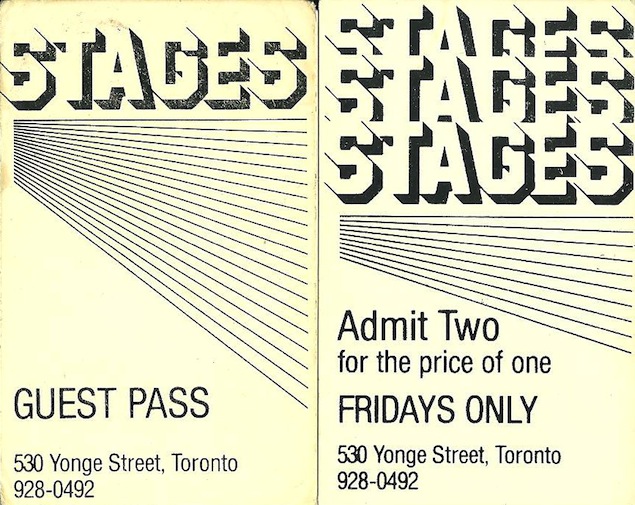
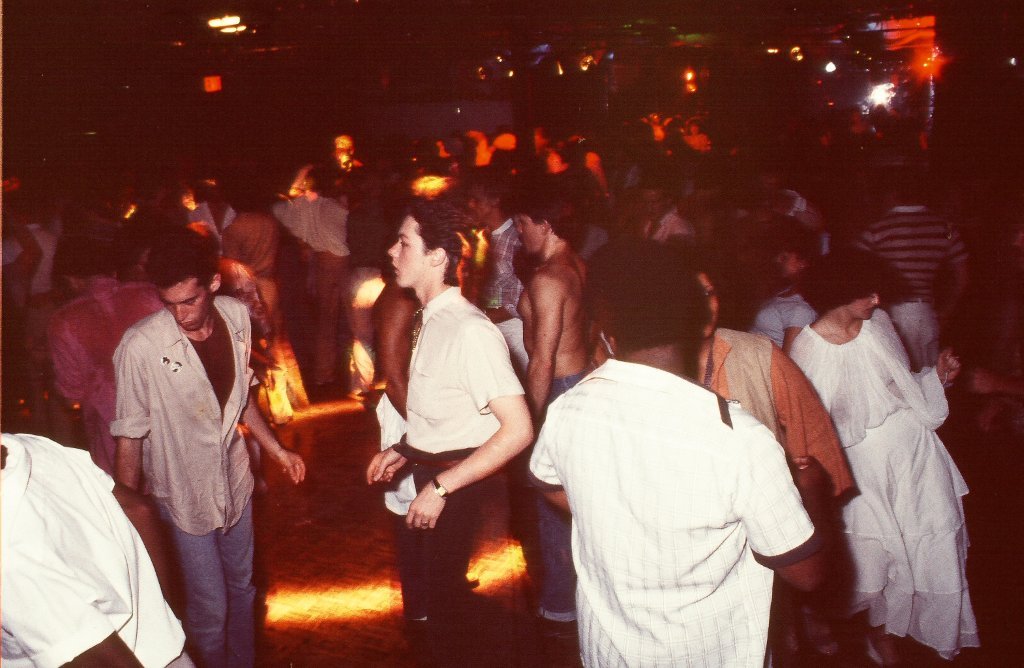
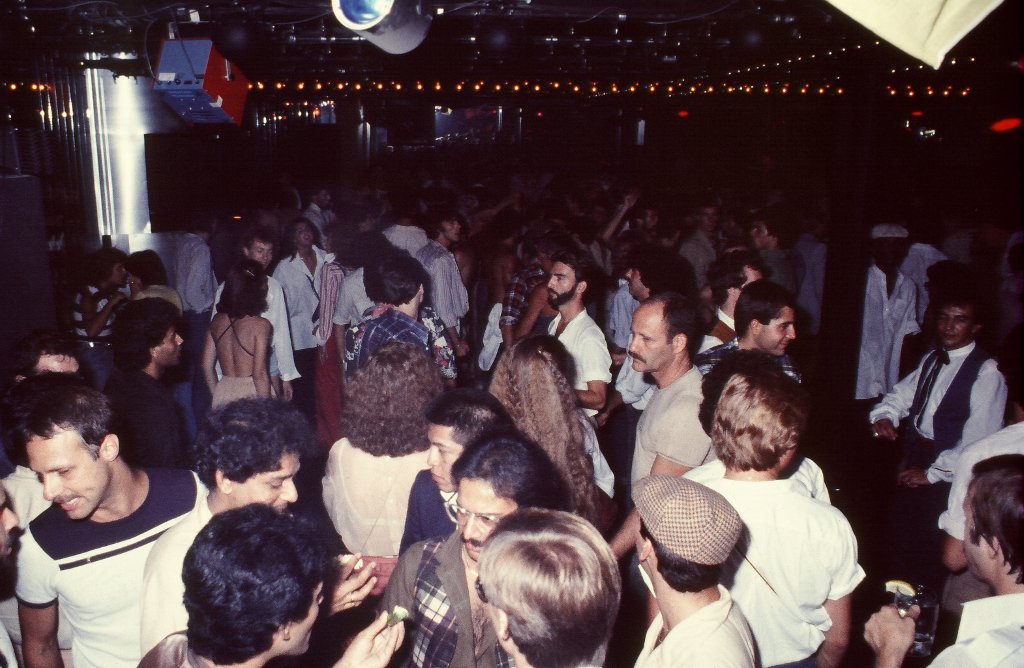
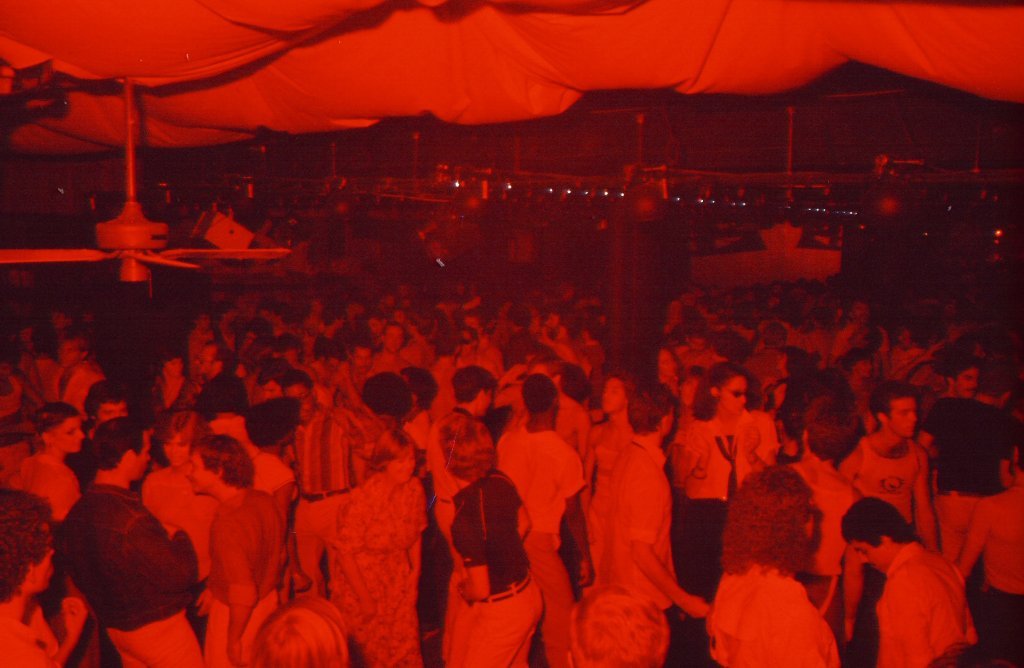
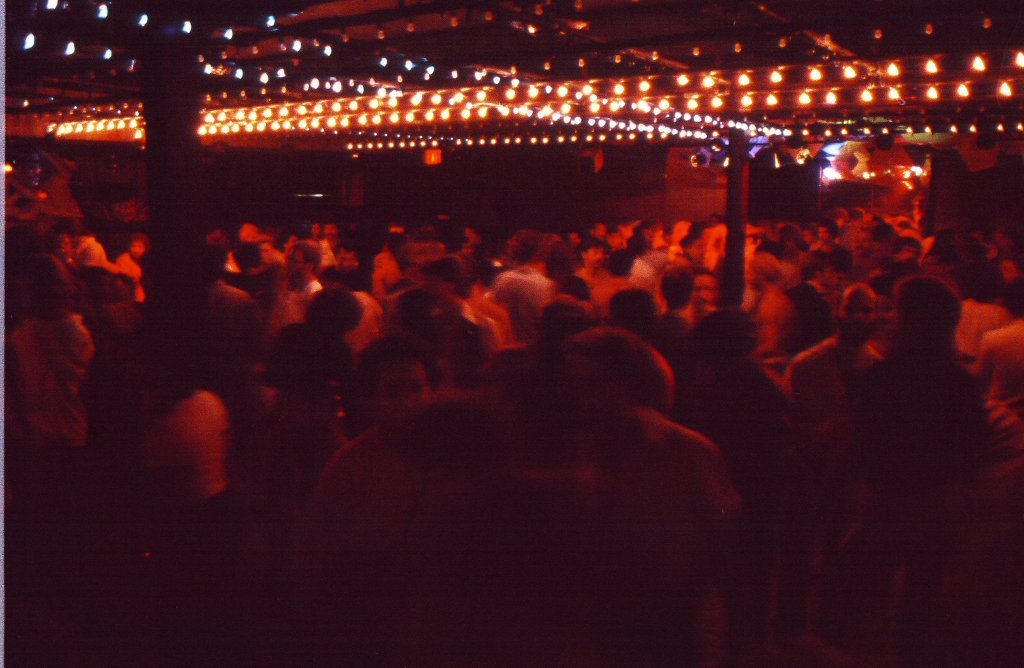
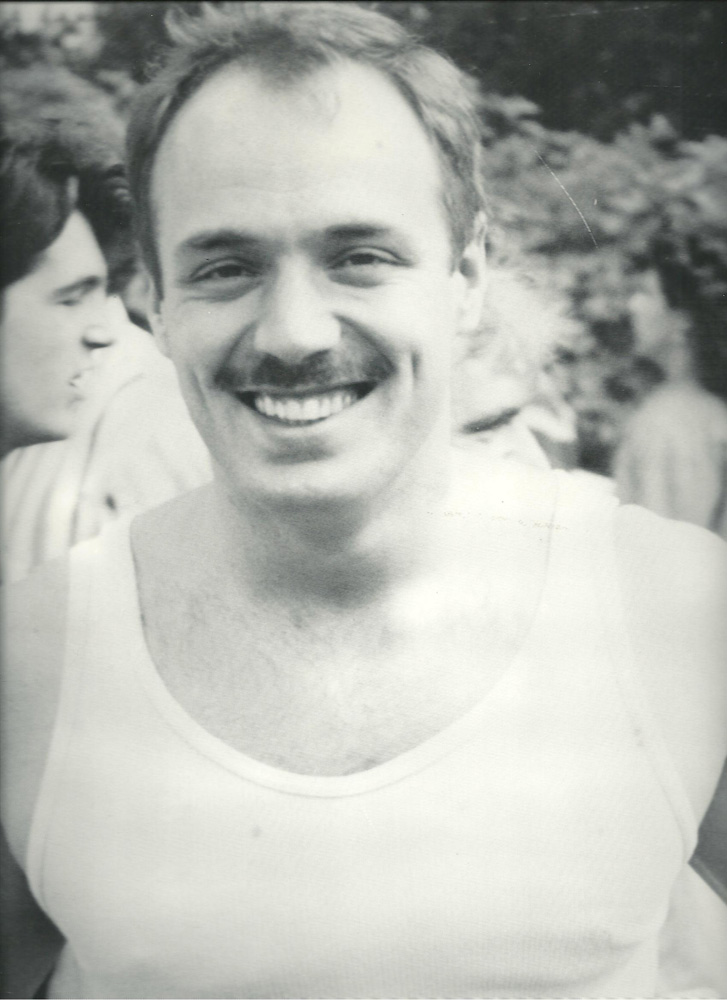
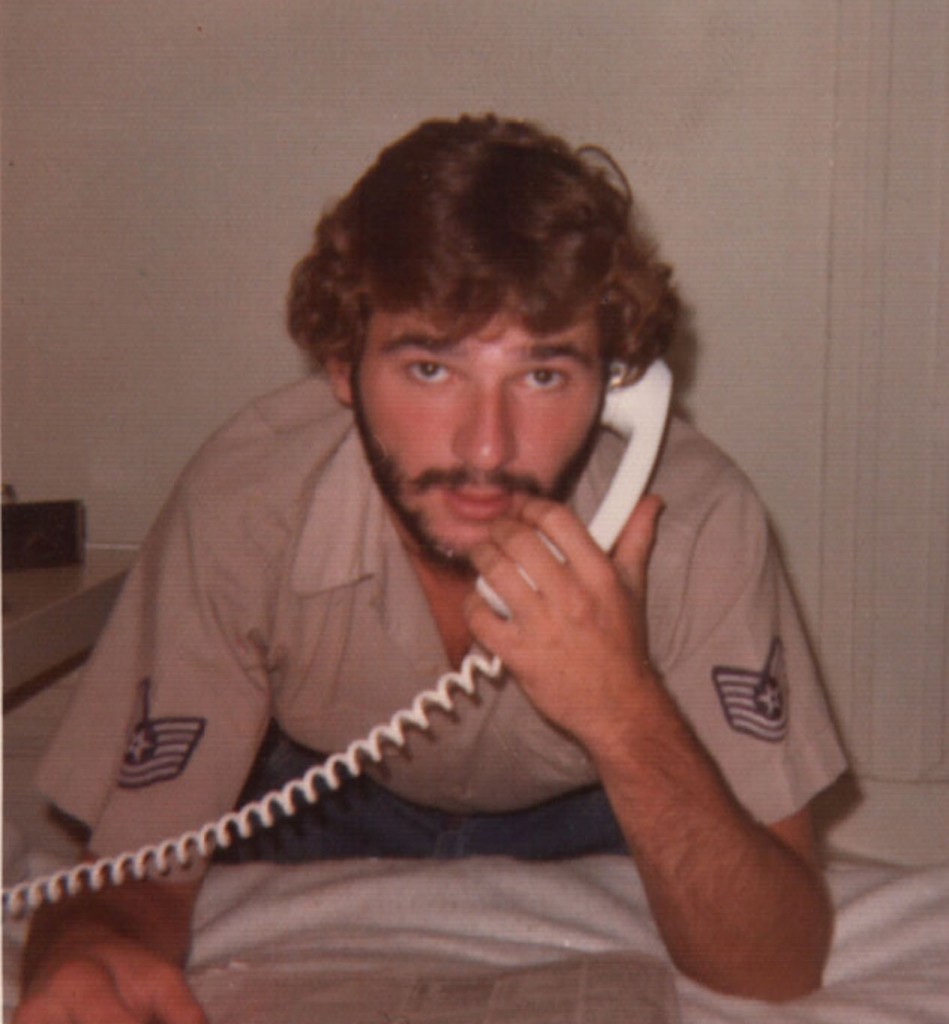
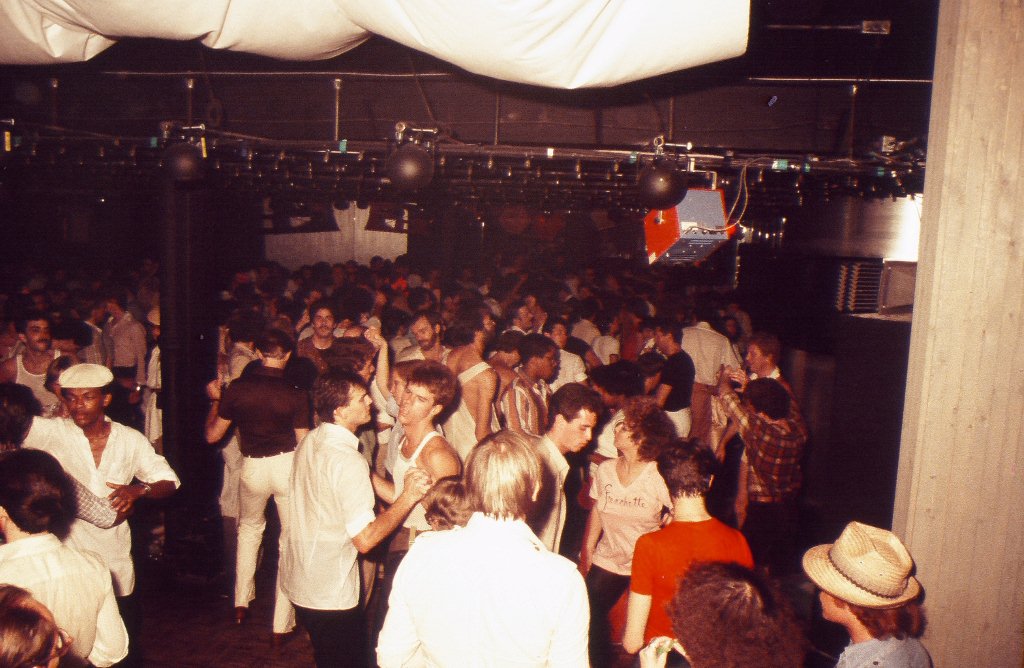
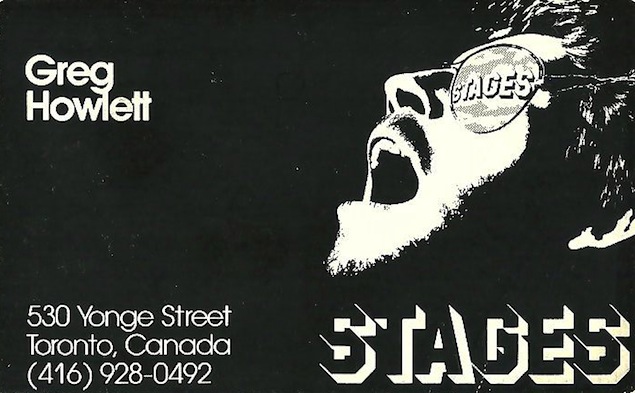
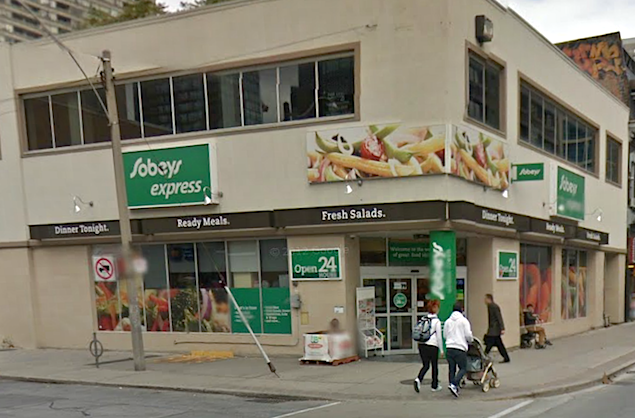
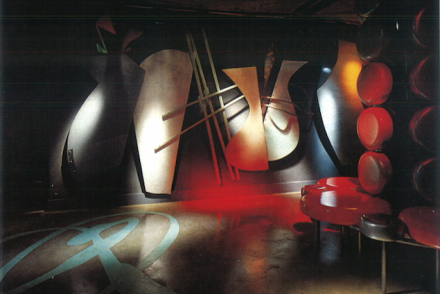
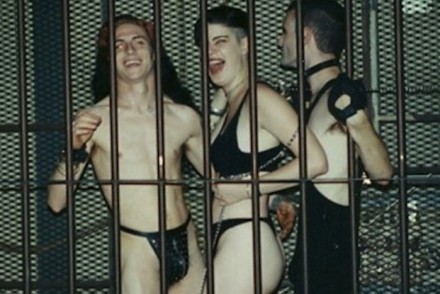
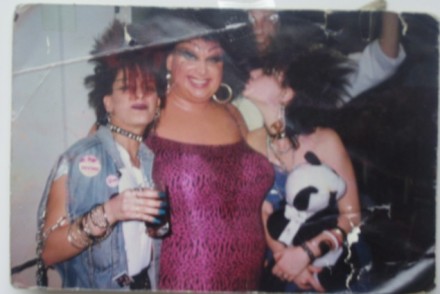

10 Comments
Thanks for story … I came across it when trying to recall what happened to Domino Club after listening to Gary Numan’s Cars on a playlist…
I used to drop in to Stages on Sunday nights. I was living downtown but would often have Sunday dinner with the family up in North Toronto to keep in touch. My dad sometimes insisted on driving me back downtown afterwards. Rather than taking me all the way to Bloor at Bathurst, where I lived, I’d get him to drop me at Bloor/Yonge. I was recently out, but not to my family, and he was somewhat puzzled by the request, but I think he had an idea what was going on.
I’d arrive about 11:30 just after the doors opened. I recall a bbigit white rattan chair just before you entered the main room. Queens would sometimes flirt with it. It would be pretty quiet for an hour, but that gave me time to pick up the vibe and dance on my own a bit. I was intensely shy back then.
The place was always packed once the restaurants closed. I assumed that much of the clientele worked in the service industry. Some great tunes. I especially liked the funky numbers!
I’d head home at about 4AM.. usually did the walk home soaked in sweat and stinking of… cough cough… cigarette smoke.
Sad to say but I’m sure most of the people I knew there are long dead.
Thanks Denise for the blast from the past… and thanks for playing my requests (sometimes)
xo
[…] going out for drinks to Boots, a gay bar, and then dancing at the Stages disco, Graham Hugh Pearce, 36, and a friend headed up Yonge St. to Wellesley St. where, at about 3:30am […]
you did mention, in passing, the Wonder Bar.
what a great club.
and, how about Arviv’s?
both the wonder bar and Arviv’s were amazing.
how do you know?
ha ha.
What a blast from the past – I had just come out in early 1983 – I was reunited with my childhood friend, Terry-David who worked at Stages (as bus boy). He introduced me to John B., Andy, Wally & Larry and I can’t remember his name, but he worked coat-check – he was a big fan dancer as well. I did meet Andrée a few times, but didn’t know her well. I think these guys shared a house together on Mutual Street. It was thanks to Terry-David (who died of AIDS in 1987) who helped me ‘come out’ in 1983; he showed me the ropes, if you will. I remember my first night at Stages – I was there, sitting on the bleachers on the left as you come in, I was allowed in before the crowds came in. The shock when I saw 2 guys kissing! LOL. Thanks for this story and bringing back great memories.
[…] bars along Yonge between College and Wellesley, such as the Parkside Tavern and the St. Charles Tavern began catering to homosexuals by the 1960s, even if their heterosexual […]
Thank you Denise for this well researched story and for bringing back so many memories. I’m listening to the set by Greg Howlett from February 15, 1981 that you’ve posted. Guaranteed I was there and dancing for hours after a night of work at The Empire Diner. You have no idea what joy hearing this music brings nor can you imagine how long I’ve searched for a tape of Greg from the Stages era. I first heard of Stages in 1977 or 1978 while at Wexford art school in Scarborough. The coolest kids from school hung out there: Fushia, Bev, and Scott. In 1980 I rediscovered Stages and fell in love with its atmosphere, lighting and music. Stages was unique: a place where music and dancing came before drinking, cruising, and socializing.
Thanks for this. My favourite memories, besides Greg and Wally’s music (I liked both), include crawling up the hallway walls (hands on one wall, feet on the other) to the washrooms and looking down on everyone; a woman in a wedding dress dancing to White Wedding; and oh yes, all the boyz.
wow that was a trip down memory lane! From my coming out days in Toronto I spent many hours at Stages. Jamie Hagerty ( you may remember him Arnie!) brought me on my first visit. Greg was a genius with the turntables especially later when the “tourist dancers” had left and he was able to play the lower tempo sleeze . Many friends and many great times. Met my friend Bill Peeling there and 37 years later we are still best friends and he visits me here in Fort Lauderdale often. Thanks Arnie !!
All comments in the string below have been republished from their original appearance on The Grid website. We’re including the readers’ comments as they add to these Then & Now stories. We look forward to reading new comments here as well.
Prancer
Excellent piece. Thanks for the pictures and the memories. I guess we all have different thoughts about the place. There was no cooler place to dance in Toronto while Stages was hot. But waiters circulating with trays of freebies? At Stages? Never saw such a thing and I was a Sat/Sun regular for almost 4 years. And it must be noted that this beloved staff written about in the article was extremely stuck-up. Never saw any friendly recognition from any of them. It was a great place to dance. Howlett (so sorry to hear he is gone) was hot and a great music performer & his lighting mate Andrea. But let’s not rewrite history casting this place as “family”. It was a discotheque and the staff was appropriately snobby and seemingly entitled to behave the way they did. MacDonald? A minor player in the DJ booth for anyone who ever danced to Greg Howlett’s work. But I concentrate on the magic and spinning and the short walk home in daylight week after week… never satiated with these fantasy free orange slices and other treats. LOL 11:53 am on January 7, 2013
anonymous 1982
guess you ate the sour grapes, I remember watermelon and canteloupes  11:43 am on January 11, 2013
Arnold Kliger
It has been brought to my attention that the contribution of Larry MacDonald,didnt get enough recognition in this story about Stages. First i must remind you that this is not a story written by me. This is Denise’s story and i think she did a great job of covering it!! Larry was part of a team of so many that helped make Stages the success that it was. I do agree that Larry was a valuable member of our Stages family and thank him for a job well done. Thanks to Denise and all the folks who helped put this article together. As we approach the Holidays I want to thank you for your contributions and wish you Peace Joy and Happiness! Arnie 8:42 am on December 9, 2012
JESSY
Who is this Stephen Cohen? i was a regular at stages, i never recall this guy, I LOVE IT GREG DEARLY, and ARNIE, was running around always making sure his patron were happy , but this guy where he come from? WHAT A GREAT PLACE, WE WENT THERE BECAUSE OF THE MUSIC, NOT THE DECOR!! 3:01 am on December 7, 2012
Doug M.
It is welcome to see that Stages has finally received its overdue recognition by the press in Toronto. I met my loverof many years at Stages and we were delighted at all the participation from the various interviewees. The DJs made that club,not he decor or the fussy poofs who showed up.What a mix of people from all over the city,guys,girls,and everything in between. I think those owners aretakingtoo much credit for its success. the people made the club after the great selection of DJs.We wouldwalk home sunglasses in hand to the Manulife where we lived. Lots of people had after Stages parties back then,it was great.Thanks for your article it has warmed our hearts.  5:44 pm on December 6, 2012
John McLeod
Just watched Maestro, the documentary about Paradise Garage, The Loft and Early DJ Culture in NYC. Great to hear about the Toronto version, thanks Denise!  3:51 pm on December 6, 2012
Anonymous
Thanks for taking me back! I remember Arnie and Greg from Dudes. Barry was the DJ and they were the best of times. 10:29 pm on December 5, 2012
Ric Cohen
I came to stages in 1978, and my life changed forever. I had come from SF, and I wanted to somewhere to let my hair down, little did I know that 4 years later ,my hair had grown long,and frizzy!! It was absolutely one of the most incredible experiences I had ever had in my life. the music,the people the ambiance, greg, wally larry, paul,wasn’t \I lucky to have these talented wonderful men as my friends,and mentor,been djing for 40+ yrs. Arnie, Steven,Andy, Bob mcmahon,Bob Beaton, Andy and andrew, who could resist and crush on these guys. It was like I died and had gone to heaven,and the special parties that I had the pleasure of working with these guys on. and some died and went to heaven, and every day of my life I miss them,and when I hear a song of the day,I think of all the missing faces. and wish they were here…..still. All I want to say is THANK YOU for one of the most incredible experiences of my adult life. Never been copied,and all I have is fond memories of all of you. Ric  8:36 pm on December 5, 2012
Anonymous
I danced with you. Near Nan,Bob,Doug,Arnie and those2 crazy girls too! What a wonderful period in dance club histoey! Bob Beaton was a close friend of mine. And yes Andy. He was arnie’s right hand. They are in heaven and glad were still talking about them.God bless.  9:07 am on December 6, 2012
Jeff Yardley
Amazing. Thank You.  11:59 pm on December 4, 2012
Stephen Cohen
What ever happened to integrity ? Is it out of style ? So setting the record straight lets gets the real facts out there about my club, Stages ! When I moved from NYC in the early seventies I found the music and club scene badly lacking from every point of view. So, I approached my so called friend Arnold and we decided to open our own club. The focus was to create a club which would provide something special that Toronto never really had. Since I was originally from NYC I modled the club after the Tenth Floor and designed it so that the focus was the dance foor, it’s light show and it’s quality sound system. I wanted the club to project a feeling as if it were your own personal club……..an extention of your own Livingroom,” and that’s what we did ! From oranges on the dry ice, to me play the tamberines ……..yes it was everyones livingroom and “Love was the message” !! So setting the record straight. I designed the space, the concept and was a full working partner for four years. When the “Disco” era started to fade with the advance of “New Wave” which I hated, I sold my shares to Arnold Kliger and moved on to my other business as an architect and designer in Noakes-Cohen, Ltd on Bay Street.  11:45 pm on December 4, 2012
Arnold Kliger
4 years you say? I misunderestimated!  5:51 pm on December 5, 2012
Anonymous
does anyone really believe that we care about this?  8:47 am on December 6, 2012
Anon
Well there’s some tacky comments from some self important old guy!!!!  8:44 am on December 8, 2012
Allen Schwartz
This Cohen person seems to have forgotten that this place was not designed at all, but was a re do of the Milk Bar,Mama Cooper’[s and others before Stages. The room was set . Centred dance floor. Cash office,DJ booth,washrooms,bar etc. Just what was “designed”?? All of these things were in place long before Stages and remained that way for years after. A re-do on the decorating at best!  10:19 am on September 23, 2013
Anonymous
Nice article. Many memories, but also losses, too many. I’ve not yet recovered if such a thing is possible?  10:55 pm on December 4, 2012
andy poolhall
Wow so many memories !! Thanx Denise 4:11 pm on December 4, 2012
Adam
What a crazy cool story!  3:49 pm on December 4, 2012